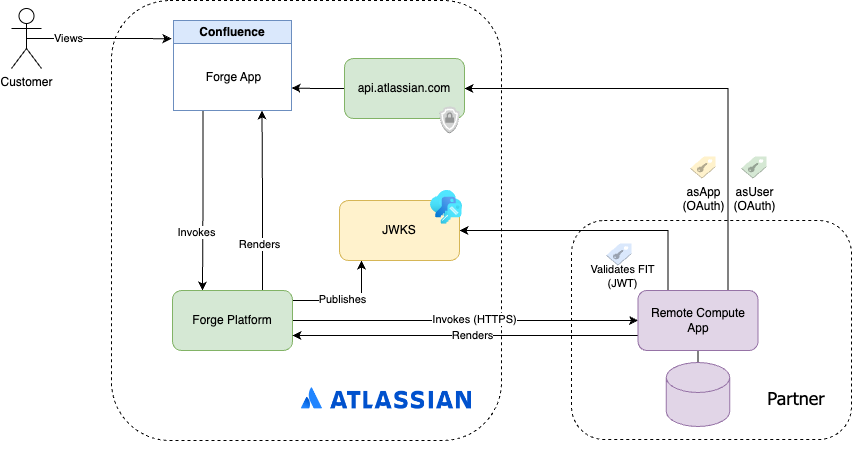Calling a remote backend from a Forge function
You can call your remote backend from your Forge functions. The diagram below illustrates the data flow.

Note: If you are calling your remote backend from a frontend function in a Forge app, see Calling a remote backend from a Forge frontend instead.
Getting started
To call your remote backend from a function you need to define a remote in your manifest.yml.
Example manifest
Here's an example of how to set up your manifest:
1 2modules: trigger: - key: update-issue function: main events: - avi:jira:updated:issue function: - key: main handler: index.run remotes: - key: remote-app-node baseUrl: https://forge-remote-refapp-nodejs.services.atlassian.com operations: - compute auth: appSystemToken: enabled: true
Calling your remote from a function
To call your remote from a function, you can use the invokeRemote method from the @forge/api package. This function allows you to make HTTP requests to your remote backend.
For example, a GET request to a remote endpoint could look like this:
1 2import { invokeRemote } from "@forge/api"; const res = await invokeRemote('remote-app-node', { path: `/tasks/?team=Forge`, method: 'GET' }); if (!res.ok) { throw new Error(`invokeRemote failed: ${res.status}`); } const json = await res.json(); console.log(`Tasks: ${JSON.stringify(json)}`);
Verifying requests
You will need to verify the requests received by your remote came from Atlassian and are intended for your app. For more information on how to do this, see Verifying remote requests.
Next steps
Now that you've verified the requests and have received your access tokens, you can:
Rate this page: